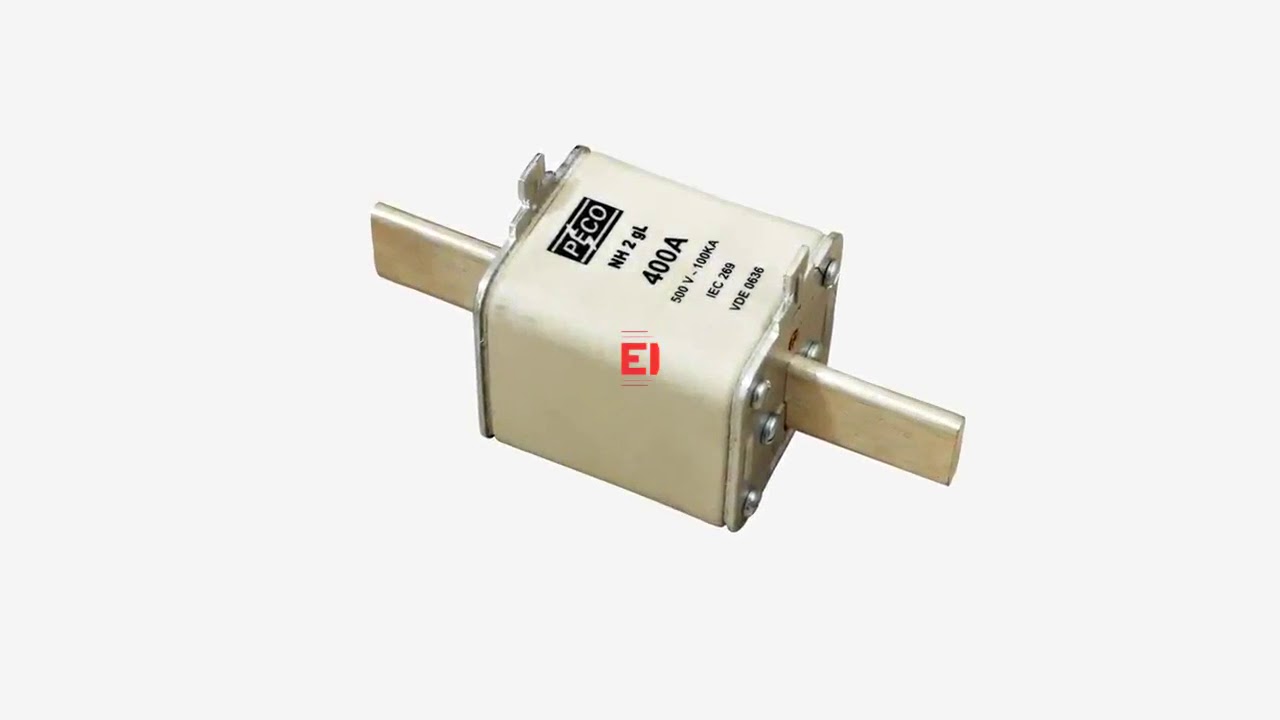Fuses are electrical safety devices designed to protect electrical systems and equipment from damage caused by electrical faults. They are used to interrupt the flow of current in an electrical circuit when the current exceeds a safe level.
Fuses come in different types, sizes, and ratings. One type of fuse used in electrical systems is the HRC fuse (High Rupturing Capacity fuse). HRC fuses provide high protection against electrical faults in industrial and commercial applications.
HRC fuses have high breaking capacity, which means they can safely interrupt high levels of fault current without causing damage to the fuse or the electrical system.
They are constructed with high-quality materials and withstand environmental conditions, including high temperatures, humidity, and vibration.
Factors when selecting an HRC fuse
Current rating, voltage rating, breaking capacity, and speed of operation need to be assumed.
- Current Rating- It is the maximum current that the fuse can safely handle without blowing. This rating is in amperes (A), and it is significant to select a fuse with a current rating that is appropriate for the application.
- Voltage Rating- The voltage rating of an HRC fuse is the maximum voltage that the fuse can safely handle without arcing or breaking down. This rating is in volts (V), so select a fuse with a voltage rating appropriate for the application.
- Breaking Capacity- The breaking capacity of an HRC fuse is the maximum current that the fuse can safely interrupt without causing damage to the fuse or the electrical system. This rating is in kilo-amperes (kA).
- Speed of operation- The speed of operation of an HRC fuse is the time it takes to blow when a fault current exceeds the rated current of the fuse.
This rating is in milliseconds (ms), and it is crucial to select a fuse with a speed of operation that is appropriate for the application.
Type of HRC fuse
In addition to these factors, it is also crucial to consider the type of HRC fuses needed for a particular application. HRC fuses, including gG, gL, and aM fuses.
- gG fuses- are general-purpose fuses suitable for a wide range of applications. They have high breaking capacity for applications where high levels of fault current may be present.
- gL fuses- are low-heat fuses designed to protect against low-level fault currents. They have low breaking capacity for applications where low levels of fault current may be present.
- aM fuses- are motor protection fuses that protect against overloads and short circuits in motor circuits. They have high breaking capacity for applications where motors are present.
When selecting HRC fuses, consult the manufacturer’s datasheet and consider the particular necessities of the application. It is also essential to ensure that the fuse is installed correctly and is adequate for the system it is maintaining.
Final Words
In conclusion, HRC fuses are a crucial component of electrical safety systems. It is used in industrial and commercial applications. They have high breaking capacity, reliability, and durability and provide high levels of protection against electrical faults. Visit IndoAsian to know more!

